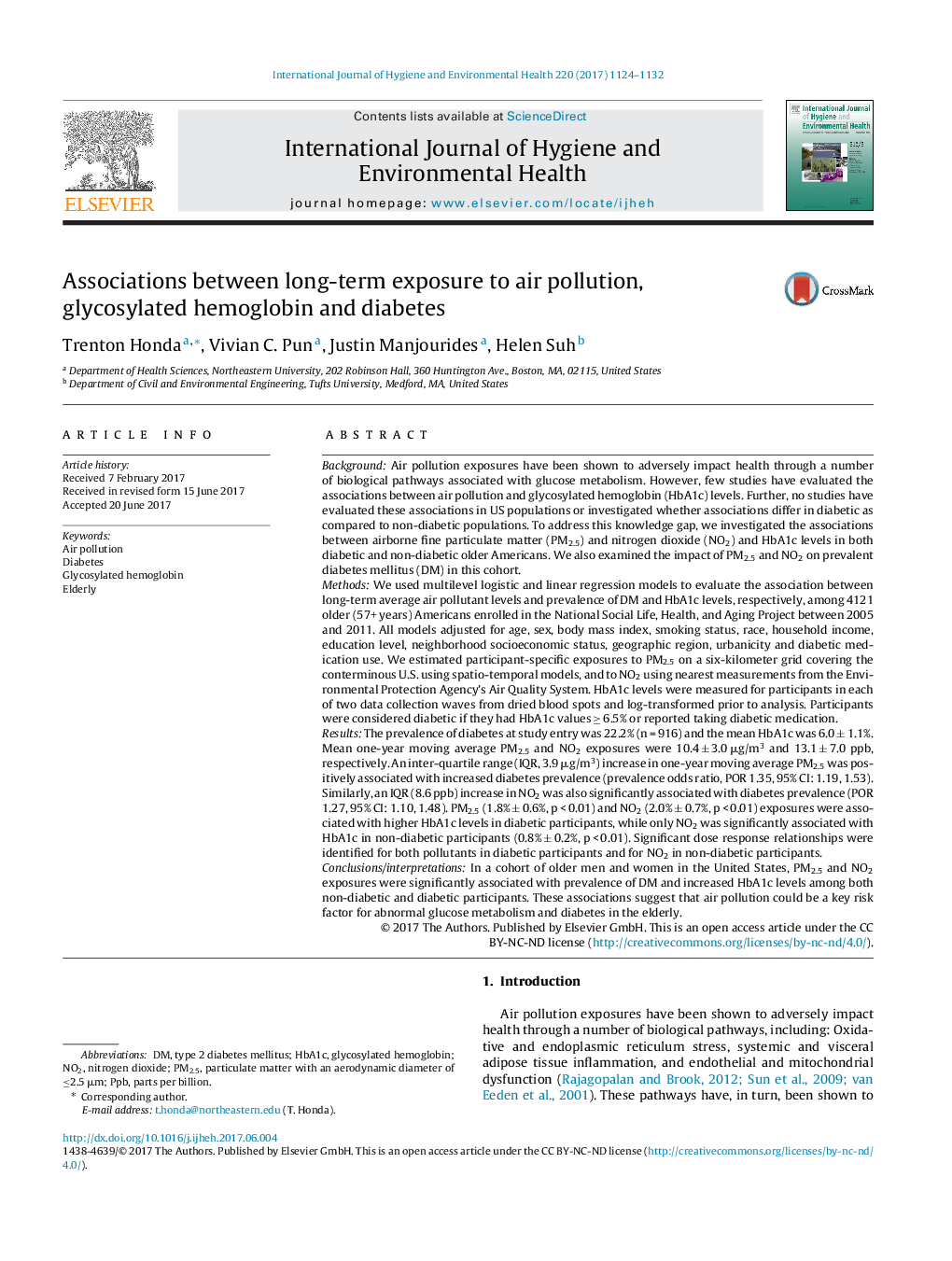| کد مقاله | کد نشریه | سال انتشار | مقاله انگلیسی | نسخه تمام متن |
|---|---|---|---|---|
| 5560456 | 1561870 | 2017 | 9 صفحه PDF | دانلود رایگان |
BackgroundAir pollution exposures have been shown to adversely impact health through a number of biological pathways associated with glucose metabolism. However, few studies have evaluated the associations between air pollution and glycosylated hemoglobin (HbA1c) levels. Further, no studies have evaluated these associations in US populations or investigated whether associations differ in diabetic as compared to non-diabetic populations. To address this knowledge gap, we investigated the associations between airborne fine particulate matter (PM2.5) and nitrogen dioxide (NO2) and HbA1c levels in both diabetic and non-diabetic older Americans. We also examined the impact of PM2.5 and NO2 on prevalent diabetes mellitus (DM) in this cohort.MethodsWe used multilevel logistic and linear regression models to evaluate the association between long-term average air pollutant levels and prevalence of DM and HbA1c levels, respectively, among 4121 older (57+ years) Americans enrolled in the National Social Life, Health, and Aging Project between 2005 and 2011. All models adjusted for age, sex, body mass index, smoking status, race, household income, education level, neighborhood socioeconomic status, geographic region, urbanicity and diabetic medication use. We estimated participant-specific exposures to PM2.5 on a six-kilometer grid covering the conterminous U.S. using spatio-temporal models, and to NO2 using nearest measurements from the Environmental Protection Agency's Air Quality System. HbA1c levels were measured for participants in each of two data collection waves from dried blood spots and log-transformed prior to analysis. Participants were considered diabetic if they had HbA1c values â¥Â 6.5% or reported taking diabetic medication.ResultsThe prevalence of diabetes at study entry was 22.2% (n = 916) and the mean HbA1c was 6.0 ± 1.1%. Mean one-year moving average PM2.5 and NO2 exposures were 10.4 ± 3.0 μg/m3 and 13.1 ± 7.0 ppb, respectively. An inter-quartile range (IQR, 3.9 μg/m3) increase in one-year moving average PM2.5 was positively associated with increased diabetes prevalence (prevalence odds ratio, POR 1.35, 95% CI: 1.19, 1.53). Similarly, an IQR (8.6 ppb) increase in NO2 was also significantly associated with diabetes prevalence (POR 1.27, 95% CI: 1.10, 1.48). PM2.5 (1.8% ± 0.6%, p < 0.01) and NO2 (2.0% ± 0.7%, p < 0.01) exposures were associated with higher HbA1c levels in diabetic participants, while only NO2 was significantly associated with HbA1c in non-diabetic participants (0.8% ± 0.2%, p < 0.01). Significant dose response relationships were identified for both pollutants in diabetic participants and for NO2 in non-diabetic participants.Conclusions/interpretationsIn a cohort of older men and women in the United States, PM2.5 and NO2 exposures were significantly associated with prevalence of DM and increased HbA1c levels among both non-diabetic and diabetic participants. These associations suggest that air pollution could be a key risk factor for abnormal glucose metabolism and diabetes in the elderly.
Journal: International Journal of Hygiene and Environmental Health - Volume 220, Issue 7, October 2017, Pages 1124-1132
